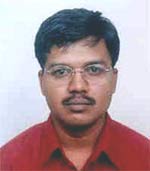Contents: 2024 | 2023 | 2022 | 2021 | 2020 | 2019 | 2018 | 2017 | 2016 | 2015 | 2014 | 2013 | 2012 | 2011 | 2010 | 2009 | 2008 | 2007 | 2006 | 2005 | 2004 | 2003 | 2002 | 2001
2005, 3
Design sensitivity analysis of Statistical Energy Analysis models using Transfer Path Approach
language: English
received 08.12.2004, published 05.02.2005
Download article (PDF, 150 kb, ZIP), use browser command "Save Target As..."
To read this document you need Adobe Acrobat © Reader software, which is simple to use and available at no cost. Use version 4.0 or higher. You can download software from Adobe site (http://www.adobe.com/).
ABSTRACT
Statistical Energy Analysis (SEA) is an attractive tool to predict noise and vibration at high frequencies. It provides an ideal framework to carry out optimisation and sensitivity analysis. Design Sensitivity Analysis (DSA) using SEA helps the designer in making changes, by indicating the model parameters that cause the greatest benefit in either narrow or broadband noise and/or vibration reduction. This paper describes a simple and effective way of getting design sensitivities of noise and/or vibration response (or objective function formed using total energy response) to subsystem damping in SEA contest. Final form of design sensitivity vector, derived using Transfer Path Approach (TPA), suggests that the method is equally applicable for analytical and experimental DSA. A general proof for convergence of sensitivity vector thus derived is given to support the approach. Example of an automobile model, formed from 2 acoustic spaces and 24 plates, is given to validate and demonstrate the method.
11 pages, 2 figures
Сitation: A. T. Chavan, D. N. Manik. Design sensitivity analysis of Statistical Energy Analysis models using Transfer Path Approach. Electronic Journal “Technical Acoustics”, http://www.ejta.org, 2005, 3.
REFERENCES
1. R. G. DeJong. Optimization of noise control designs using SEA. Proceeding of the second International AutoSEA user’s conference, Detroit-Troy, Marriot-Troy, Michigan, USA, 2000.
2. R. J. M. Craik. The effect of random errors on a large statistical energy analysis model. JSV. 1983, v. 91, 65-84.
3. http://www.freesea.de
 |
Arun Chavan was born in 1975 in Y.P.Wadi Sangli, Maharashtra, India. He received his BE degree in mechanical engineering from the Rajarambapu Institute of Technology (RIT) Sakharale in 1997 and the ME degree from the Walchand College of Engineering Sangli of Shivaji University Kolhapur in 2000. From 1999 to 2000, he was worked in Automotive Research Association of India (ARAI). He is currently doing his PhD in Indian Institute of Technology Bombay (Powai) Mumbai. e-mail: arun.chavan(at)iitb.ac.in |
|
 |
Dhanesh Manik was born in 1960 in Mysore, India. He received his Bachelors degree in Mechanical Engineering in 1982 from Mysore University, Masters degree in Mechanical Engineering in 1985 from Indian Institute of Science, Bangalore and Doctoral degree in Mechanical Engineering in 1991 from Auburn University, Auburn, Alabama, USA. He joined on the faculty of IIT Bombay in 1992 and is currently Associate Professor in Mechanical Engineering. e-mail: dnm(at)me.iitb.ac.in |
|
